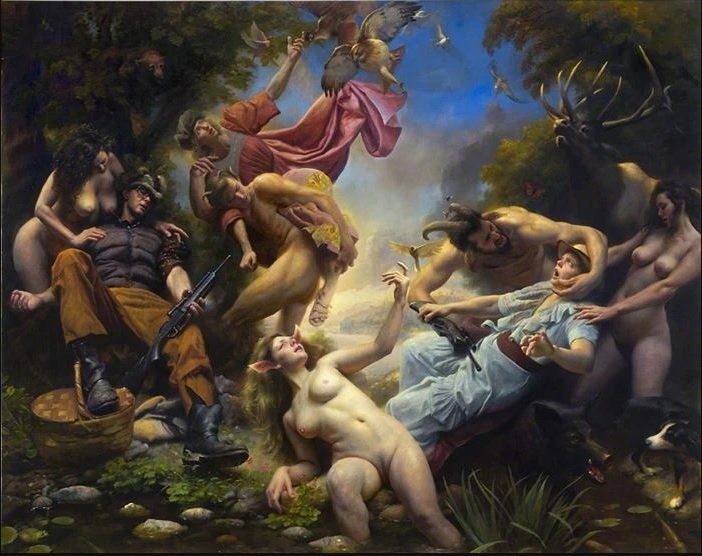American painter Adam Miller sips an espresso on the rooftop balcony of his rented apartment in the heart of the ancient city of Florence, a short walk from the Uffizi museum. Over rooftops on the skyline he sees the Duomo, the Piazza della Signoria, the Palazzo Vecchio, the Palazzo del Bargello, and the Badia Fiorentina. Below, the narrow streets and wide plazas are empty, the tourists have fled, and the city is quarantined. The insane traffic madness of the scooter fleet nipping between speeding Italian cars has vanished, the noise of people walking and talking has been silenced, and the jangling of a spoon against white porcelain echoes over the rooftops. Only the local people remain. It’s an eerily beautiful time. “It’s a weird idyllic interlude, with disaster on either side,” Miller says.
Five hundred years ago, Raphael walked these streets.
Miller is a brilliant painter, equal to, or greater, than many of the renaissance masters, with the same elegance of pose, compositional skill and ability to capture personality that distinguished Raphael from his contemporary competitors. The reason Miller is trapped in his apartment is that before the virus changed our world, ending easy travel and confining us, he set out on a pilgrimage to Florence to better understand Raphael, the greatest of the old masters.
Raphael was an early influence on Miller, especially on his drawing style, in his approach to the design of bodies in his initial sketches, using egg forms to construct them. As a young student Miller had read Erasmus’ De Copia, which instructed poets and writers in what he called the mosaic method, memorizing a series of details of their subject, which could be pieced together to make a poem. Miller applied this technique to Raphael’s paintings and drawings, memorizing and internalizing the gestures and motifs of the master, then applying them to his own work. By becoming so familiar with Raphael’s technique, Miller became his emulator, going beyond the master’s work, and developing his own personality and subjects.
Miller says that he found the greatness of Michelangelo obvious – seeing it in his unparalleled observation of the body, its rhythms, movement and its expressive form. Da Vinci’s greatness was obvious, too – his soft and enigmatic chiaroscuro, his detailed research into nature. But to Miller, what made Raphael such a great artist remained a nebulous mystery. His paintings, he says, were not always as immediately impressive to him as works by either Da Vinci or Michelangelo, who both lacked Raphael’s grace.
